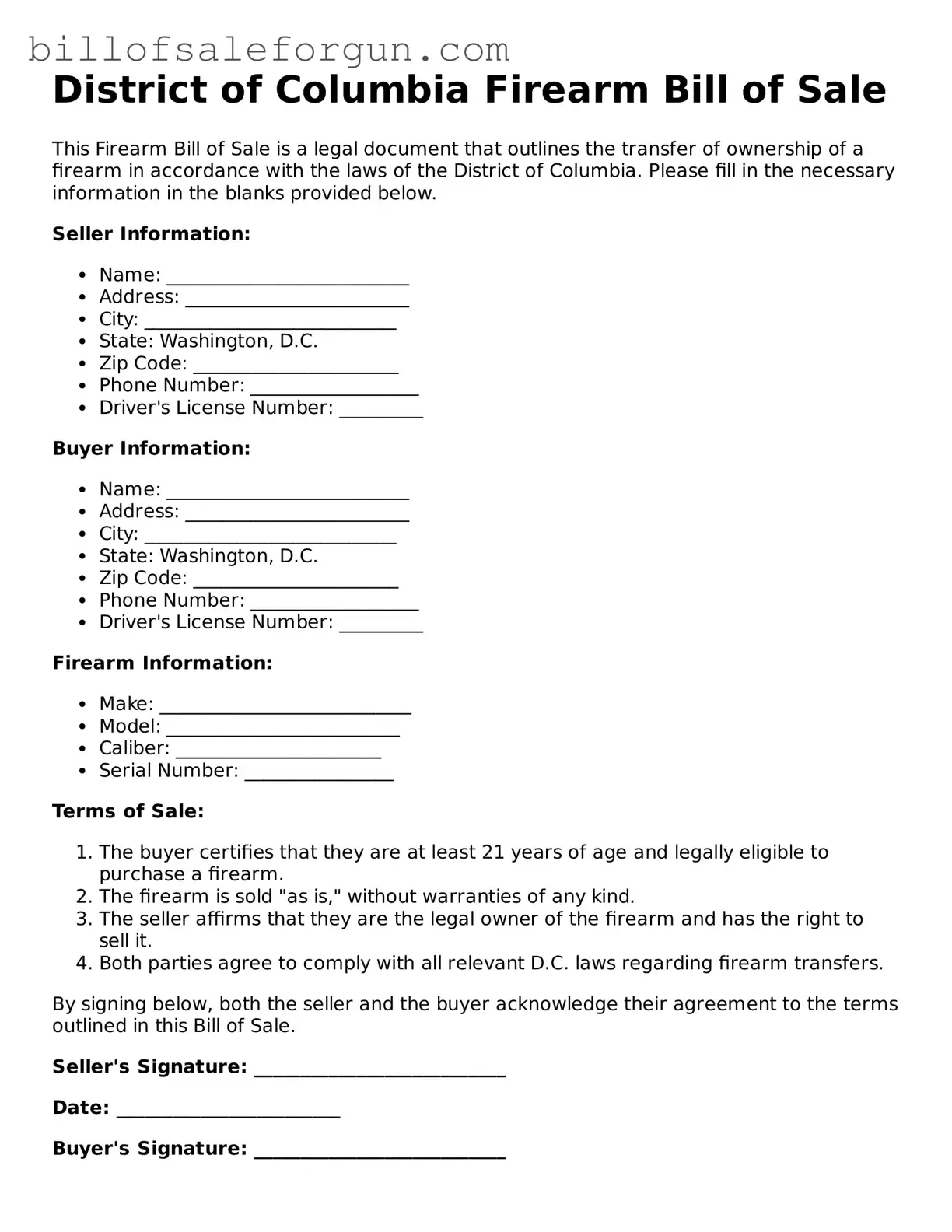Similar forms
The Firearm Bill of Sale is akin to a Vehicle Bill of Sale, which is used when transferring ownership of a motor vehicle. Both documents serve as a record of the transaction, detailing the buyer and seller's information, the item being sold, and the terms of the sale. Just as the Vehicle Bill of Sale can include specifics like the vehicle identification number (VIN) and odometer reading, the Firearm Bill of Sale may include details about the firearm, such as its make, model, and serial number. These documents help protect both parties by providing proof of ownership and the conditions of the sale.
Another document similar to the Firearm Bill of Sale is the Personal Property Bill of Sale. This form is used for the sale of various types of personal property, such as furniture, electronics, or collectibles. Like the Firearm Bill of Sale, it outlines the buyer and seller's information, a description of the item, and the sale price. Both documents serve to formalize the transaction and can be important for future reference, especially in disputes regarding ownership or condition of the item sold.
The Lease Agreement shares similarities with the Firearm Bill of Sale in that both documents establish a legal relationship between parties regarding property. While a Lease Agreement details the terms under which a tenant can use a rental property, the Firearm Bill of Sale outlines the transfer of ownership of a firearm. Both documents typically include the names of the parties involved, the description of the property, and the terms of the agreement, ensuring clarity and legal protection for all parties involved.
A Purchase Agreement for real estate also mirrors the Firearm Bill of Sale in its function of documenting the transfer of ownership. This agreement includes details about the buyer and seller, the property being sold, and the agreed-upon price. Just as the Firearm Bill of Sale provides a record of firearm ownership transfer, a Purchase Agreement secures the transaction of real estate, making it clear who owns what and under what terms. Both documents serve as crucial evidence in legal matters that may arise after the sale.
Lastly, the Equipment Bill of Sale is another document that parallels the Firearm Bill of Sale. This form is used for the sale of equipment, such as machinery or tools, and includes similar elements like the buyer and seller's names, a description of the equipment, and the sale price. Both documents aim to provide a clear record of the transaction, ensuring that both parties have a mutual understanding of what is being sold and the conditions of the sale. This helps in establishing ownership and can be vital for warranty claims or future sales.
